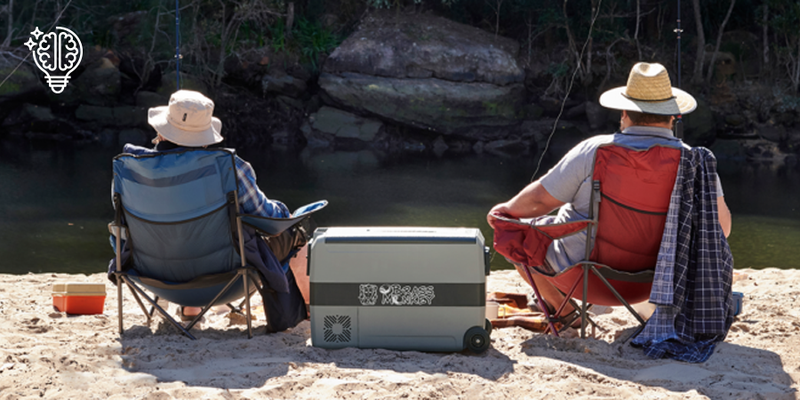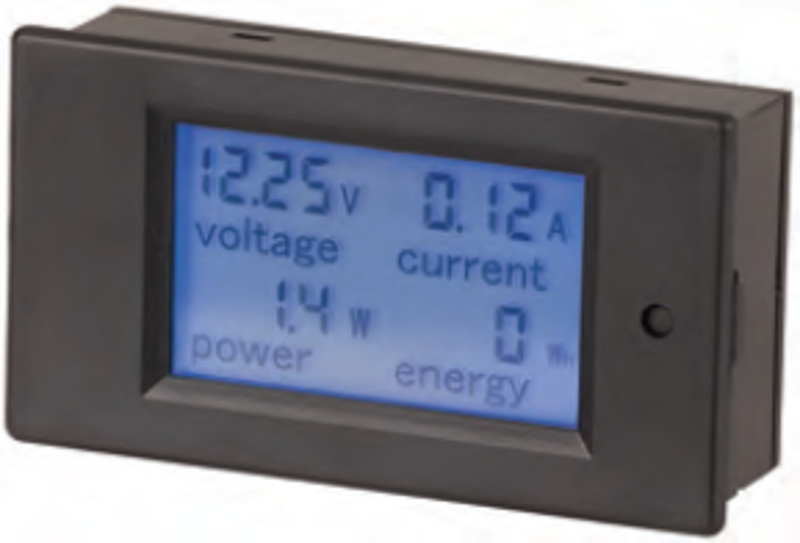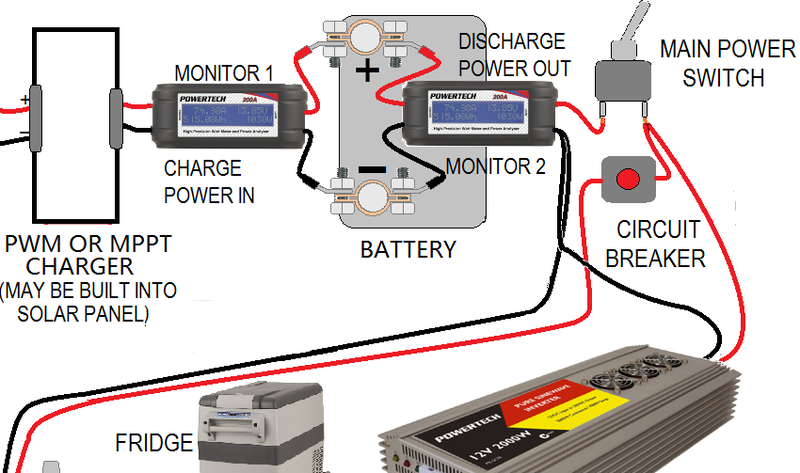
Over the past few years there have been some tremendous advances in 12/24 Volt fridge technology. This primer gives you some information on their power consumption and other issues.
If you want a fridge to take camping or go Grey Nomad-ing or whatever, you really should buy something specifically designed for the job.
Modern mobile fridges typically draw a fraction of the power that their predecessors did, mostly as a spin-off from regulations mandating minimum energy efficiency standards for standard mains-powered kitchen fridges. The improvements in compressor and insulation technologies are equally applicable to low-voltage models.
Most mobile fridges now use "inverter" type motors similar to those used in better quality kitchen fridges. They are quieter, electrically more efficient, and they can operate on either 12V or 24 Volts without adjustment.
To get the very best efficiency, it's hard to beat a top-opening fridge, similar in design to a chest freezer. Opening from the top means the cold air doesn't spill out every time you open the door. It also means that the cooling coils are mounted at the top, allowing more even chilling. Plus there is the simple advantage that your food isn't so likely to fall out when you're travelling!
Nonetheless, for those who prefer a conventional type upright fridge, we have a couple of those as well.
We currently (Nov 2020) have 17 different "chest-type" models available, to suit most requirements and budgets. Nearly all them can be set to a temperature range from -20°C to +20°C, and many have separate freezer compartments. In most cases, the "Fridge/Freezer" models have a removable baffle that separates the freezing and chilling compartments, with separate temperature settings for both. (If you pull the baffle out, one set of temperature controls disappears). The higher-end models have actual separate compartments with separate lids.
All models have low battery voltage cutout systems, to protect the battery from going completely flat and possible damaging it. There are three settings: "High", "Medium" and "Low". Generally, the "high" setting is for the situation where the fridge runs from your vehicle's starting battery, and it is vitally important that it always maintain enough charge to start the vehicle. If you have a secondary battery system, you can afford to let that one run down somewhat more, since you won't be depending on it to get the vehicle running.
"Medium" is the best setting for secondary battery systems. "Low" is mainly intended for the situation where there are long cables between the battery and the fridge, which result in a considerable voltage drop. (Needless to say, for best results, you should try to keep the battery cables as short as possible).
Here's a table of the cut-in/cut-out voltages. (They're the same for all models).
Stage | 12V input | 24V input |
H1-low | 8.5V off;10.9V on | 21.3V off;22.7V on |
H2-Medium | 10.1V off;11.4V on | 22.3V off;23.7V on |
H3-high | 11.1V off;12.4V on | 24.3V off;25.7V on |
How much power will my fridge use?
That is unfortunately very much a: "How long is a piece of string?" type question. All we can give you are typical figures for a fridge that has reached its set operating temperature in a 25°C environment and has neither been opened nor had items added or subtracted.
The most economical results seem to come from fridges where there is no freezer function and the temperature is set to around 2-3°C. Using the freezer function can increase the power consumption 3 to 4 times, and considerably more so in hotter climates.
For best results, don't set the temperature any lower than it really needs to be! Not only will that save power, it will greatly extend the compressor life.
Here's an example of some real-world testing we did:
GH1640 35 Litre Fridge |
But note that that's in a temperature-controlled office environment well shielded from the sun. However, subsequent shaded outdoor testing in Sydney spring weather gave broadly similar results.
Obviously, you're not going to get the same results in all parts of Australia. In a Tasmanian winter the compressor may not come on at all, while in a Darwin summer it might be running continuously!
Surprisingly, once the specified operating temperature has been reached, there's not a huge amount of difference between the different capacity fridges, particularly if they are fairly full.
The smallest fridges draw an averaged current of around 0.5 Amps at 25°C, while the largest ones draw a little over 1.5A.
What is different is how much power they will use getting down to the set temperature. Although they're all different sizes, most of them actually have the same motor/compressor assembly, and so they all draw much the same current (~3.5A from 12.6 Volts, half that for 24V) in the normal operating mode.
Note that the motors are electronically speed regulated, and so the current they draw depends on the battery voltage. So a compressor that draws say 3.5 Amps from 12.6 Volts when the car engine is not running, may drop to about 3 Amps when the engine is running and the battery voltage rises to 13.8V.
Typically a medium-sized top loading fridge that has reached thermal equilibrium with an ambient temperature of about 25°C, will draw an average current of somewhere around 25 amp/hours per day, near enough to an averaged current of 1 Amp. So a 100Amp/hour battery would be expected to run it for at least 4 days.
Note that while the running current is typically 3-4 Amps, the startup current (while the compressor is initially pressurizing the refrigerant gas, can be as high as 8 Amps. You need to be sure your power source can supply that much current, otherwise the fridge's under-voltage protection may shut it down.
By far the best way to work out your power requirements is to splice a power meter such as the QP2320 into the 12V line. These are very simple to install and wire up, and eliminate all guesswork.

You can then run the fridge for 24 hours and note the accumulated "Wh" (Watt-Hours) energy reading. Dividing that by the battery voltage will give you the amp-hour consumption per day (24 hours).
For example, if the Wh reading was 252 and the battery voltage was 13.2, then the Amp-hours would be calculated by dividing 252 by 13.2 giving about 19 Amp Hours. From that we can calculate that a 100 Amp Hour battery will power the fridge for about 100 ÷ 19 = 5.26 days, or about 5 days, 6 hours.
If you want to permanently run the fridge from solar power, an even better setup is to have two such meters, one in the line the from the solar panel to the battery, and the other in the line from the battery to the fridge (and any other devices you are powering).

That way, at the end of each day, as long as the accumulated "energy" reading on the charging side is at least equal to the energy reading on the discharge side, you know your battery will always remain at peak charge.
Compressors?
The first question many people ask is: "What brand of compressor does this fridge use?" presumably because it's something they've read on online caravanning forums.
Unless stated specifically otherwise, all our fridges use Chinese-made compressors, the same ones used by the major brands.
Remember that the bulk of our customers are only likely to be using these products for a few weeks out of every year, so the value of using a more expensive brand is questionable. Nonetheless we do have some models that use LG compressors, for people either permanently running from 12V or travelers out for the long haul in the outback.
Having said that, we keep quite a few of these types running for years as "personal" office fridges; not a single one has ever let us down...
Also, while we do get a small number of failures with these fridges, it's rarely the compressor that fails.

